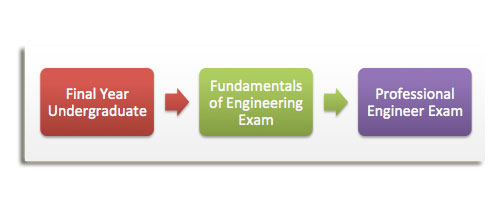The Fundamentals of Engineering Exam is an examination that assesses the knowledge and skills needed for entry-level engineers. It tests for academic achievement, creative thinking, and basic engineering problem-solving abilities. The test is administered at designated Pearson VUE test sites throughout the U.S. and Canada by appointment only. There are two parts to the FE exam: Part I (multiple choice) and Part II (free response). Many engineering employers require a passing score on the FE exam before they will consider you as a potential candidate for future employment opportunities.
A few important facts about the fundamentals of engineering exam:
|
The first half of the test is about general engineering fundamentals, which every engineer ought to know, while the second half focuses on the engineering discipline of the examinee's choice e.g. mechanical, civil, structural etc. The best time for you to take the FE exam is when you are in the final year of Engineering as that is the time when most of the engineering fundamentals would be still fresh in your memory. Then, with only a little preparation, you might be able to pass the exam with very good scores. But even if you are an engineer in practice, you should not worry. We are sure that if you buy one of our FE exam practice courses and pay heed to it, you will pass the exam with flying colours.
| A simplified breakdown of the FE Exam: 15% - Mathematics 10% - Engineering Mechanics 9% - Electricity & Magnetism 9% - Chemistry 8% - Engineering Economics 7% - Engineering Probability & Statistics 7% - Fluid Mechanics 7% - Material Properties 7% - Strength of Materials 7% - Computers 7% - Ethics and Business Practices 7% - Thermodynamics |  |
You will be titled an Engineer in Training (EIT) or Engineer Intern (EI) after passing FE exam. Then you will be required to gain work experience of about four years in your respective field as an engineer intern. When you have gained the required experience you will become eligible to sit for a PE exam and get yourself titled as a Professional Engineer (of course you will have to pass that too). This is also mandatory for a non-US citizen planning to work in the USA as a Professional Engineer. Both of these tests are written and graded by the National Council of Examiners for Engineering and Surveying (NCEES). However, the passing scores and requirements for the exam are set by each individual state.
Currently, NCEES is offering these exams in seven other countries as well for the examinees who live outside the USA. The countries are Canada (Alberta), Emirate of Sharjah, Egypt, Japan, South Korea, Saudi Arabia and Turkey.
